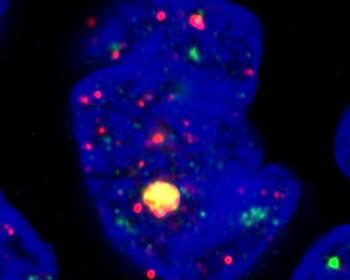
Most glioblastoma tumors are marked by one or two broad mutation patterns, but about 20 percent of the lethal brain tumors have biomarkers that cannot be identified.
Now scientists at Duke Cancer Institute have identified mutations for the vast majority of the remaining 20 percent of uncharacterized tumors, which tend to be especially lethal. The findings indicate that these mutations involve a previously unknown disruption of the cell’s normal mortality that is governed by components called telomeres.
Telomeres are pieces of DNA that protect the ends of chromosomes. Under normal circumstances, they become shorter with age and eventually trigger a series of events that leads to a cell’s natural death. Some genetic mutations cause them to remain long however, so cells never die, leading to immortal cells and tumor growth.
“The mutations we identified could be targeted for new therapies that would benefit these patients, who typically have the worst prognosis,” said lead author Bill Diplas, an M.D./Ph.D. candidate and member of the Hai Yan Laboratory in the Duke Department of Pathology.
Read complete article at Duke Health News